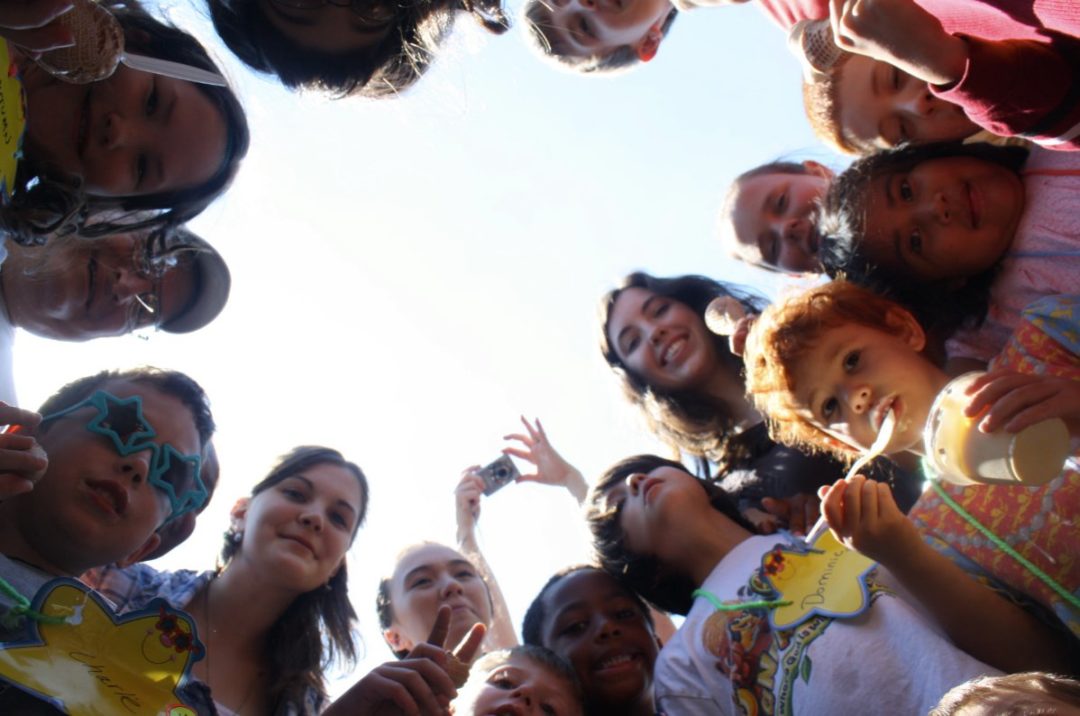FEATURED GRANTEE: Dayton International Peace Museum
Categorized as: Stories on March 6, 2011.

Photo courtesy of the Dayton International Peace Museum Facebook page.
Editor’s Note: Across our family’s divergent personalities and politics, we all agree that nothing else works unless we begin with peace. Read why our elders have donated years of sweat equity and grants to expand peace education in Ohio.
Mission: The Dayton International Peace Museum seeks to inspire a culture of peace locally, nationally, and globally through exhibits, activities, and events that focus on nonviolent choices.
A non-profit, all volunteer organization and one of the few community-based institutions with a focus on peace in the United States, the peace museum offers educational programs and exhibits that are non-partisan and feature themes of nonviolent conflict resolution, social justice issues, international relations, and peace.
A space to make peace.
History: Founded in 2003 by local life-long peace workers Christine and Ralph Dull and others, the Dayton International Peace Museum seeks to inspire a culture of peace locally, nationally, and internationally. They see peace not as an ideal or goal but as a process that begins with inner peace, extends outward into families and cities, and then between nations.
Run entirely by volunteers–75 or more active volunteers at a given time–and supported entirely by donations, the DIPM believes in diversity beginning with its management. Its 16-member board includes such honorary trustees as the late Richard Holbrooke, broker of the 1995 Dayton Peace Accords, which ended the conflict in Bosnia-Herzegovina; Paul Rusesabagina, real-life hero of the Rwandan genocide on which the movie Hotel Rwanda was based; Willie Nelson, country singer; Martin Sheen, actor; and Mary Eisenhower, granddaughter of the president and CEO of People to People International.
Find some historical and current readings in their peace library, that includes over 1,200 peace books.
 (photos courtesy of Jackie Hagan)
(photos courtesy of Jackie Hagan)
Peace through meditation and mediation.
Impact: Offers talks and workshops at the museum, outreach to schools, churches, and organizations via the Peace Mobile, and sponsors such local events as:
- “Cinema for the Conscientious” films on global issues
- Nobel Peace Prize annual celebration, e.g. 2010 political essayist and democracy advocate Liu Xiabo
- Panel discussion at Dayton Mercy Center Mosque on conflict in Kashmir
- “Spiritual Paths to Peace,” a 15-month series of speakers from various religions
They reach out to the community with these goals in mind:
- Illuminate the rich history of nonviolent peacemakers and peacemaking
- Provide a place of inspiration and encourage all nonviolent ways to peace
- Become a thriving center for peaceful and nonviolent activities
- Work toward the prevention of wars, marginalization, and other acts of violence
- Promote human rights, interdependence, and reconciliation
- Reduce fear and polarization by encouraging tolerance and respect
- Strive for and celebrate diversity as a means of promoting peace
- Host lectures and roundtables on current events and issues
Celebrate diversity as a means to peace.
Programs:
Programs for peace include:
- Summer Peace Camps for children
- Peace-Abilities emotional literacy and conflict management workshops for all ages
- Programs in contemplative practices and nonviolent communication
- Monthly Interfaith Dialogue
- ScreenPeace film festival
- Live Performing Arts for Peace
- Bowls of Hope to benefit the Dayton Food Bank and the peace museum
- Speaker Series to share such personal experiences as the bombing of Hiroshima and deactivating land mines
- “A Wise and Peaceful Heart,” a 9-week workshop on meditation
- Student Awards bestowed annually on kids who contribute to peace and inclusion in their high schools
- Annual “Dayton Peace Heroes” awards to locals who reflect the global Nobel Peace Prize recipients
- Monthly “Great Decisions” discussions of global problems
Exhibits:
The museum, housed in the historic Italianate “Pollack House” in downtown Dayton, runs permanent and rotating exhibits; for example:
- “Promoting Peace with Books not Bombs”–the work of Greg Mortenson
- The plights and hopes of people in Iran, Myanmar, and Darfur
- The Golden Rule, peace, and forgiveness in world religions
- Under Our Noses: modern slavery and what you can do about it
This year, the peace museum is hosting, in cooperation with University of Dayton students, an exhibit on the horror of modern-day slavery and what individuals can do to prevent it, and another on “the inevitable connection between environmental degradation and international relations.”
Our connection: Initially, the Skees Family took up a private collection among the second generation to make a gift to the DIPM in honor of the 50th wedding anniversary of Jasmine and Hugh in 2006. The Skees elders had volunteered for the museum since its inception, and they have made additional grants for operational and educational support of the DIPM’s peace programs in the subsequent years. We currently plan deep support of the museum’s efforts to complete its mortgage and apply for state funding to expand equal-access and green-building facilities. Hugh spends at least one day a week hosting the front desk, and he and Jasmine attend educational, interfaith, and community activities all year at the DIPM, a profound embodiment of their own personal and family values of peace through equality and respect. “There are so many museums about war,” Jasmine muses, “but this is the only museum in the U.S. dedicated to peace. I wish there were more.”
DONATE directly to the Dayton International Peace Museum here. (Please specify if you wish your donation to help with the “mortgage fund” or another program.)
SUBSCRIBE! Like what you see? Click here to subscribe to Seeds of Hope!
